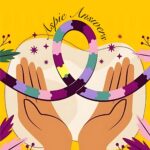All About ADHD
A gentle, practical hub for understanding ADHD — what it is, signs & traits, diagnosis steps, school & work supports, therapies & tools, and trusted places to get help.
Start here
Image hero → white band → sections. Use the quick-nav to jump around.
What is ADHD?
ADHD is a neurodevelopmental difference involving attention regulation, impulsivity, and activity levels. People may experience time blindness, working-memory load, rejection sensitivity, sensory needs, and strong strengths (creativity, hyperfocus, problem-solving).
- Inattention (distractibility; working-memory strain)
- Hyperactivity (restlessness; internal motor)
- Impulsivity (blurting; quick decisions)
- Hyperfocus on interests; rapid ideation; pattern spotting
- High energy; courage to start; flexible thinking
- Empathy; authenticity; resilience
Signs & Traits
Common signs
- Difficulty starting/switching tasks; time blindness
- Forgetfulness; losing items; working-memory overload
- Restlessness (external or internal); fidgeting
- Talkativeness; fast thoughts; interrupting
Context matters
Traits vary across settings (home, school, work) and day-to-day. Masking can hide needs and increase burnout.
Diagnosis (DSM-5 overview)
Pathway
- History + interviews (self/parents/teachers)
- Rating scales; rule-outs (sleep, vision, other)
- Consider co-occurrence (anxiety, learning differences, autism)
Before • During • After
- Before: track traits & impact; gather reports
- During: be yourself; share supports that work
- After: plan supports; school/work adjustments
Supports: School & Work
School ideas
- Clear instructions; chunk tasks; visual schedules
- Movement breaks; flexible seating; fidgets
- Time supports: timers, checklists, “first-then”
Workplace ideas
- Agreed comms; short stand-ups; meeting notes
- Boards/kanban; quiet zones/headphones
- Reasonable adjustments: deadlines; flexible hours
Therapies & Treatments
Common approaches
- Education & coaching (skills, planning, pacing)
- CBT/DBT-informed supports; emotion regulation
- Medication (stimulant / non-stimulant) — clinician-led
Self-care & environment
- Sleep routines; nutrition; movement breaks
- Reduce friction (baskets, labels, checklists)
- Body-double sessions; accountability buddies
Medical decisions must be made with a qualified clinician.
Language Matters
Use respectful, precise language. Preferences differ (identity-first vs person-first). Follow the person’s lead.
- Say “ADHD traits/needs” rather than “deficits”.
- Avoid stereotypes; ADHD is not laziness — it’s a different brain style.
- Celebrate strengths and agency alongside supports.
Calm Corner
Breathing + Reset (90 seconds)
Box breathe 4-4-4-4. Then write 1 tiny next step and a reward (tea, stretch, song).
FAQ
Downloads
Add your Canva/PDF links later — buttons are placeholders.
Find Local Help
Browse the ADHD Global Directory to find country-specific services, supports, and ND-run organisations.
